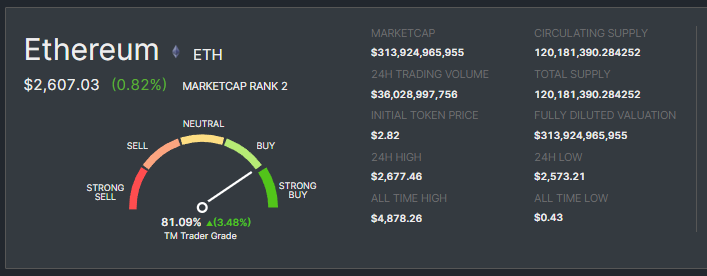Mastering REST APIs: Design, Security & Best Practices

REST APIs are the backbone of modern web services and integrations. Whether you are building internal microservices, public developer APIs, or AI-driven data pipelines, understanding REST principles, security models, and performance trade-offs helps you design maintainable and scalable systems.
What is a REST API and why it matters
REST (Representational State Transfer) is an architectural style that relies on stateless communication, uniform interfaces, and resource-oriented design. A REST API exposes resources—users, orders, metrics—via HTTP methods like GET, POST, PUT, PATCH, and DELETE. The simplicity of HTTP, combined with predictable URIs and standard response codes, makes REST APIs easy to adopt across languages and platforms. For teams focused on reliability and clear contracts, REST remains a pragmatic choice, especially when caching, intermediaries, and standard HTTP semantics are important.
Core design principles for robust REST APIs
Good REST design balances clarity, consistency, and flexibility. Key principles include:
- Resource-first URLs: Use nouns (e.g., /users/, /invoices/) and avoid verbs in endpoints.
- Use HTTP semantics: Map methods to actions (GET for read, POST for create, etc.) and use status codes meaningfully.
- Support filtering, sorting, and pagination: Keep payloads bounded and predictable for large collections.
- Idempotency: Design PUT and DELETE to be safe to retry; document idempotent behaviors for clients.
- Consistent error model: Return structured error objects with codes, messages, and actionable fields for debugging.
Documenting these conventions—preferably with an OpenAPI/Swagger specification—reduces onboarding friction and supports automated client generation.
Authentication, authorization, and security considerations
Security is non-negotiable. REST APIs commonly use bearer tokens (OAuth 2.0 style) or API keys for authentication, combined with TLS to protect data in transit. Important practices include:
- Least privilege: Issue tokens with minimal scopes and short lifetimes.
- Rotate and revoke keys: Provide mechanisms to rotate credentials without downtime.
- Input validation and rate limits: Validate payloads server-side and apply throttling to mitigate abuse.
- Audit and monitoring: Log authentication events and anomalous requests for detection and forensics.
For teams integrating sensitive data or financial endpoints, combining OAuth scopes, robust logging, and policy-driven access control improves operational security while keeping interfaces developer-friendly.
Performance, caching, and versioning strategies
APIs must scale with usage. Optimize for common access patterns and reduce latency through caching, compression, and smart data modeling:
- Cache responses: Use HTTP cache headers (Cache-Control, ETag) and CDN caching for public resources.
- Batching and filtering: Allow clients to request specific fields or batch operations to reduce round trips.
- Rate limiting and quotas: Prevent noisy neighbors from impacting service availability.
- Versioning: Prefer semantic versioning in the URI or headers (e.g., /v1/) and maintain backward compatibility where possible.
Design decisions should be driven by usage data: measure slow endpoints, understand paginated access patterns, and iterate on the API surface rather than prematurely optimizing obscure cases.
Testing, observability, and AI-assisted tooling
Test automation and telemetry are critical for API resilience. Build a testing pyramid with unit tests for handlers, integration tests for full request/response cycles, and contract tests against your OpenAPI specification. Observability—structured logs, request tracing, and metrics—helps diagnose production issues quickly.
AI-driven tools can accelerate design reviews and anomaly detection. For example, platforms that combine market and on-chain data with AI can ingest REST endpoints and provide signal enrichment or alerting for unusual patterns. When referencing such tools, ensure you evaluate their data sources, explainability, and privacy policies. See Token Metrics for an example of an AI-powered analytics platform used to surface insights from complex datasets.
Build Smarter Crypto Apps & AI Agents with Token Metrics
Token Metrics provides real-time prices, trading signals, and on-chain insights all from one powerful API. Grab a Free API Key
FAQ: What is a REST API?
A REST API is an interface that exposes resources over HTTP using stateless requests and standardized methods. It emphasizes a uniform interface, predictable URIs, and leveraging HTTP semantics for behavior and error handling.
FAQ: REST vs GraphQL — when to choose which?
REST suits predictable, cacheable endpoints and simple request/response semantics. GraphQL can reduce over-fetching and allow flexible queries from clients. Consider developer experience, caching needs, and operational complexity when choosing between them.
FAQ: How should I version a REST API?
Common approaches include URI versioning (e.g., /v1/) or header-based versioning. The key is to commit to a clear deprecation policy, document breaking changes, and provide migration paths for clients.
FAQ: What are practical security best practices?
Use TLS for all traffic, issue scoped short-lived tokens, validate and sanitize inputs, impose rate limits, and log authentication events. Regular security reviews and dependency updates reduce exposure to known vulnerabilities.
FAQ: Which tools help with testing and documentation?
OpenAPI/Swagger, Postman, and contract-testing frameworks allow automated validations. Observability stacks (Prometheus, Jaeger) and synthetic test suites help catch regressions and performance regressions early.
Disclaimer
This article is for educational and technical guidance only. It does not provide financial, legal, or investment advice. Evaluate tools, platforms, and architectural choices based on your organization’s requirements and compliance constraints.
Create Your Free Token Metrics Account

.png)




%201.svg)
%201.svg)


%201.svg)











.svg)




.png)